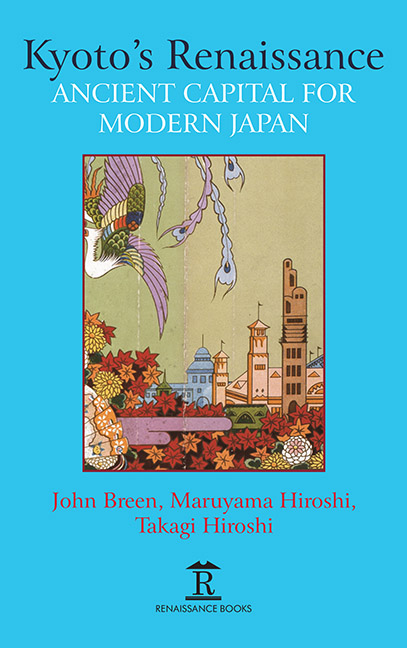Chapter 8 - Nihonga in Kyoto at the Dawn of the Modern Era
Published online by Cambridge University Press: 30 April 2022
Summary
INTRODUCTION
NIHONGA REFERS to works of art painted with traditional Japanese materials. Silk, washi paper, and sometimes wooden panels were used for supports, while pigments comprised sumi ink and natural minerals. However, the word Nihonga did not exist before the modern Meiji period. At the end of the Edo period, yōga (literally “Western paintings”) began to arrive in Japan from Western Europe in the form of oil paintings. Since they differed from traditional Japanese paintings in both the materials and the techniques used, the term Nihonga emerged in contradistinction. In other words, before yōga was widely disseminated in Japan, all painting was Nihonga; there was no need to designate it especially as Japanese art.Note that for the purposes of this chapter, Nihonga refers not to religious works of art such as butsuga (Buddhist paintings) or Shintō kaiga (Shinto paintings), but to secular paintings alone.
Similarly, in this chapter I limit the years implicit in the term “dawn of the modern era” to 1897 at the latest, around the time when Mori Kansai (1814–1894), Kishi Chikudō (1826–1897), and Kōno Bairei (1844–1895) – the three giants who flourished in the Edo period and, in the Meiji period, led the Kyoto art world – died, and passed on their mantles to the next generation. In the context of the development of Nihonga, then, this period covers a time when the unique characteristics of the Kyoto art world exerted great influence.
Japanese painting originated as “art for the living space,” and was intimately linked to the history of Japanese architecture. It was early on seen as a component of tategu, those standing wooden fittings, such as sliding doors, used to create and define interior spaces, and, indeed, the fact that it evolved as interior decoration is one of its defining features. In the Heian period (794–1185), tategu was a key aspect of the shinden zukuri architecture style in which a large interior space was partitioned into smaller, separated spaces by means of portable screens. On these various types of partitions – folding screens (byōbu), sliding panels (fusuma shōji), portable partitions (tsuitate shōji), and tapestry-like hangings (zejō ) – pictures were painted.
- Type
- Chapter
- Information
- Kyoto's RenaissanceAncient Capital for Modern Japan, pp. 189 - 219Publisher: Amsterdam University PressPrint publication year: 2020



